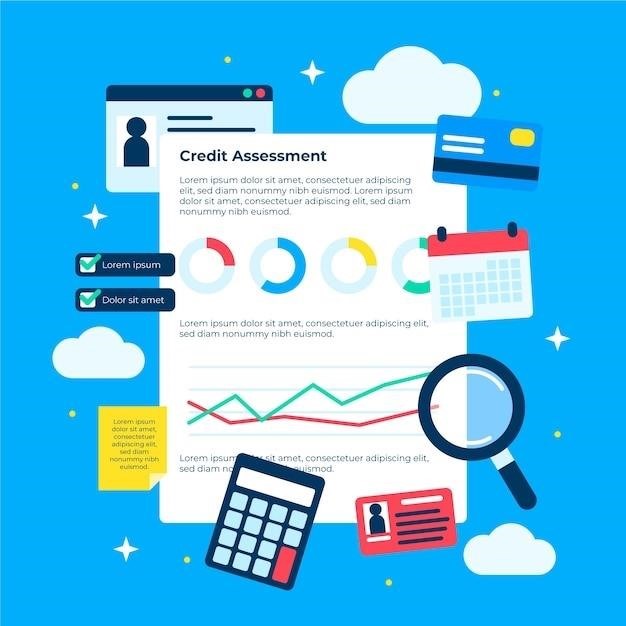Understanding the Credit Reporting Resource Guide (CRRG)
What is the Credit Reporting Resource Guide?
The Credit Reporting Resource Guide (CRRG) is a valuable, easy-reference resource prepared by the Consumer Data Industry Association (CDIA) that provides the codes for compliance with the Fair Credit Reporting Act (FCRA)․
What is the Credit Reporting Resource Guide?
The Credit Reporting Resource Guide (CRRG) is a comprehensive resource guide prepared by the Consumer Data Industry Association (CDIA) that provides the codes and guidelines for reporting credit information to consumer reporting agencies․ It outlines the industry standards for data reporting in the Metro 2 format, which is a standardized format used for electronic transmission of credit information․ The CRRG serves as a crucial reference tool for data furnishers, ensuring their compliance with the Fair Credit Reporting Act (FCRA) and other relevant regulations․ It covers a wide range of topics, including account reporting, data formatting, and various other aspects of credit reporting․
The Purpose of the CRRG
The primary purpose of the CRRG is to facilitate accurate and compliant credit reporting․ It provides a standardized framework for data furnishers to report credit information to consumer reporting agencies in a consistent and reliable manner․ This ensures that credit bureaus receive accurate and complete data, which is essential for generating accurate credit scores and reports․ The CRRG also helps to streamline the credit reporting process, making it more efficient for both data furnishers and consumer reporting agencies․ It aims to minimize errors and inconsistencies in credit reporting, which can have a significant impact on individuals’ credit histories and financial well-being․ By promoting compliance with the FCRA and other relevant regulations, the CRRG helps to protect consumers’ rights and ensure fair and responsible credit reporting practices․
Key Features of the CRRG
The CRRG incorporates several key features that make it a comprehensive and valuable resource for data furnishers․ It includes the entire Metro 2 Format, which is the industry standard for credit reporting․ This format defines the specific fields and codes used to report credit information, ensuring consistency and accuracy․ The CRRG also provides detailed guidelines and explanations for each code, making it easier for data furnishers to understand and apply the correct codes in their reporting․ Additionally, the CRRG offers guidance on reporting transferred, sold, or purchased accounts, ensuring that such transactions are accurately reflected in credit reports․ It also includes information on best practices for electronic data transmission, which is essential for secure and efficient reporting․ By providing a comprehensive set of codes, guidelines, and best practices, the CRRG helps to ensure that credit reporting is accurate, consistent, and compliant with relevant regulations․
Using the CRRG for Compliance
The CRRG is a crucial resource for data furnishers to ensure compliance with the Fair Credit Reporting Act (FCRA) and other relevant regulations․
Compliance with the Fair Credit Reporting Act (FCRA)
The CRRG provides a comprehensive framework for data furnishers to comply with the Fair Credit Reporting Act (FCRA), a federal law that governs the collection, use, and disclosure of consumer credit information․ The CRRG’s codes and guidelines are essential for ensuring accurate and responsible reporting practices․ By adhering to the CRRG, data furnishers can minimize the risk of legal penalties and maintain the integrity of the credit reporting system․ The FCRA requires data furnishers to provide accurate and up-to-date information, and the CRRG provides the necessary guidance to meet these requirements․
Understanding Metro 2 Formatting
The CRRG is a crucial tool for understanding the Metro 2 format, the industry standard for transmitting credit information to consumer reporting agencies․ The Metro 2 format is a complex system of codes and fields used to represent various aspects of credit accounts, including account status, payment history, and credit limits․ The CRRG provides detailed definitions and explanations of each field and code, ensuring data furnishers use the correct format when reporting data․ This standardized format enables accurate and efficient data exchange between data furnishers and consumer reporting agencies, facilitating a reliable and consistent credit reporting system․
Reporting Transferred, Sold, or Purchased Accounts
The CRRG provides specific guidance on reporting transferred, sold, or purchased accounts, ensuring accurate and compliant reporting to credit bureaus․ It outlines the necessary steps and codes for reporting these transactions, including the original creditor’s information, the date of transfer, and the new account holder’s details․ This ensures that credit reporting agencies have accurate and up-to-date information about account ownership, allowing them to accurately reflect the account’s status in consumers’ credit reports․ The CRRG also helps to prevent confusion and potential disputes regarding account ownership and responsibility, promoting a smooth and transparent credit reporting process․

Resources and Support for the CRRG
The CRRG is a comprehensive resource guide, offering a wealth of information and support for data furnishers to ensure accurate and compliant credit reporting․
CDIA Resources and Training
The Consumer Data Industry Association (CDIA) offers a range of resources and training to support data furnishers in their understanding and implementation of the CRRG․ These resources include educational materials, interactive online courses, and industry events․ The CDIA’s educational materials provide guidance on credit reporting, including the industry-standard Metro 2 format․ Their interactive online courses offer targeted training tailored to meet your regulatory compliance needs․
CDIA events feature the most pertinent topics in regulatory compliance presented by leading industry experts․ These events provide valuable insights and networking opportunities for data furnishers․ By leveraging these resources, data furnishers can stay informed about the latest developments in credit reporting and ensure their compliance with the FCRA․
Software Vendors and Data Processors
Software vendors and data processors play a crucial role in supporting data furnishers’ compliance with the CRRG․ Software vendors provide specialized tools that facilitate accurate and efficient credit reporting, often incorporating the latest updates from the CRRG․ These tools can help data furnishers manage their data, generate reports, and ensure compliance with Metro 2 formatting․ Data processors, on the other hand, handle the actual transmission of credit information to credit bureaus, ensuring that the data is formatted correctly and meets the requirements of the FCRA․
When selecting software vendors and data processors, data furnishers should prioritize those with a strong understanding of the CRRG and a commitment to staying up-to-date with its revisions․ Working with reputable vendors and processors provides data furnishers with the confidence that their credit reporting practices are accurate and compliant with the latest industry standards․
Legal and Regulatory Guidance
Navigating the complex landscape of credit reporting laws and regulations can be challenging․ The CRRG provides valuable legal and regulatory guidance to help data furnishers understand their obligations under the FCRA․ It clarifies specific requirements related to data accuracy, reporting timelines, and consumer rights․ The CDIA also offers additional resources and training materials on legal and regulatory compliance, ensuring that data furnishers stay informed about the latest developments in credit reporting law․
By staying updated on legal and regulatory guidance, data furnishers can mitigate risks, protect themselves from potential legal issues, and maintain a strong reputation within the industry․ The CRRG serves as a vital resource for navigating the complexities of credit reporting law and ensuring that data furnishers operate in compliance with all applicable regulations․
Best Practices for Credit Reporting
The CRRG promotes best practices for credit reporting, emphasizing data accuracy, timely reporting, and efficient communication with consumers․
Electronic Data Transmission
Electronic data transmission is a secure and safe method for reporting credit information, as recommended by the Credit Reporting Resource Guide (CRRG)․ The CRRG encourages data furnishers to utilize electronic transmission for its efficiency and accuracy․ TransUnion, one of the major credit reporting agencies, mandates electronic data transmission as the most secure method, emphasizing the importance of safeguarding sensitive consumer information․ While TransUnion does not endorse specific software providers, it encourages exploring options available online․ By embracing electronic data transmission, businesses can streamline their reporting processes, reduce errors, and ensure compliance with regulatory requirements, adhering to the best practices outlined in the CRRG․
Ensuring Data Accuracy
The Credit Reporting Resource Guide (CRRG) emphasizes the paramount importance of data accuracy in credit reporting․ Maintaining accurate information is crucial for protecting consumers’ financial well-being and ensuring fair and responsible lending practices․ The CRRG provides comprehensive guidelines and codes to assist data furnishers in achieving and maintaining data accuracy․ These guidelines cover various aspects, including data validation, error correction procedures, and dispute resolution processes․ By adhering to these guidelines, data furnishers can minimize the risk of reporting inaccurate information, contributing to a more reliable and trustworthy credit reporting system․ The CRRG’s emphasis on data accuracy reflects its commitment to protecting consumer rights and promoting a fair and transparent credit reporting ecosystem․
Staying Updated with CRRG Revisions
The Credit Reporting Resource Guide (CRRG) is a dynamic document that undergoes regular revisions to reflect changes in laws, regulations, and industry best practices․ Staying abreast of these revisions is essential for data furnishers to maintain compliance and ensure their reporting practices remain current․ The CDIA regularly announces updates and releases new versions of the CRRG․ Data furnishers should actively monitor these announcements and promptly implement any necessary changes to their reporting processes․ This proactive approach helps to avoid potential compliance issues and ensures that reported data adheres to the latest industry standards․ The CRRG’s ongoing evolution underscores its commitment to providing a robust and relevant framework for credit reporting․
The Importance of the CRRG
The CRRG plays a vital role in the accuracy and integrity of consumer credit reporting, ensuring a fair and transparent system for both businesses and individuals․
Impact on Consumer Credit Scores
The CRRG has a direct impact on consumer credit scores by providing the standardized framework for reporting credit information to credit bureaus․ Accurate and consistent reporting, facilitated by the CRRG, ensures that credit scores are based on reliable data, leading to fair and accurate assessments of creditworthiness․
The CRRG’s use of standardized codes and formats ensures that credit information is consistently interpreted and processed by credit bureaus, reducing the potential for errors or inconsistencies that could negatively affect consumer credit scores․ By promoting accurate and reliable reporting, the CRRG contributes to a more equitable and transparent credit reporting system, benefiting both consumers and businesses․
Benefits for Businesses and Individuals
The CRRG offers significant benefits for both businesses and individuals by promoting a fair and accurate credit reporting system․ For businesses, the CRRG simplifies compliance with the FCRA, reducing the risk of legal issues and penalties․ It also enables them to report credit information consistently and accurately, fostering trust with lenders and other financial institutions․
Individuals benefit from the CRRG by ensuring that their credit information is reported accurately and consistently, leading to fair and accurate credit scores․ This transparency allows individuals to better understand their credit history and take steps to improve their creditworthiness․ The CRRG also empowers individuals to dispute inaccurate information reported to credit bureaus, ensuring fairness and accuracy in the credit reporting system․
Future of Credit Reporting and the CRRG
The CRRG will continue to play a vital role in the future of credit reporting, adapting to evolving technologies and regulations․ The increasing reliance on electronic data transmission and the emergence of new data sources, such as alternative credit data, will necessitate ongoing updates and refinements to the CRRG․
As the credit reporting landscape evolves, the CRRG will need to incorporate new data formats, reporting standards, and compliance guidelines․ This will ensure that the CRRG remains a comprehensive and relevant resource for data furnishers, credit bureaus, and consumers․ The CDIA, through its continued development and dissemination of the CRRG, will play a crucial role in shaping the future of credit reporting, ensuring fairness, accuracy, and transparency for all stakeholders․
